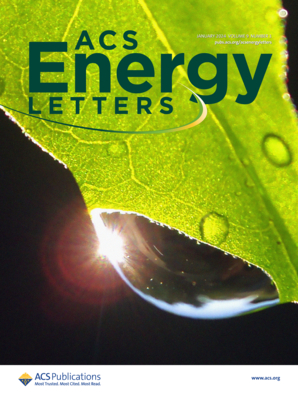A Janus Membrane with Asymmetrical Proton Transport for Cross-Communication Harmony for an Extreme Lean Electrolyte Zn–V Battery
IF 19.3
1区 材料科学
Q1 CHEMISTRY, PHYSICAL
引用次数: 0
Abstract
The Zn metal anode demands a reduction in water activity and proton concentration to prevent undesirable side reactions, while the V-based cathode necessitates water as a “lubricant” and protons as intercalation guests, presenting a challenge in balancing these needs. Herein, we report a Janus membrane with asymmetrical proton transport for cross-communication harmony in Zn–V batteries, designed to harmonize these contrasting requirements. The MXene-rich phase blocks the proton/water transport through the F-termination site and effectively suppresses dendrite formation through epitaxial growth. Meanwhile, the proton selective cellulose-rich phase (H+/Zn2+ selectivity of over 21) stabilizes the cathode/electrolyte interface by capturing dissolved vanadium and enhancing proton intercalation into the cathode. This designed Janus membrane enables a practical Zn–V full battery at a high depth of discharge of 66.7% and extreme lean electrolyte (1 g/Ah) conditions, enabling the high energy zinc battery (214.8 Wh/kgelectrode). Our approach introduces a sustainable separator for long-lasting, high-performance zinc metal batteries.

求助全文
约1分钟内获得全文
求助全文
来源期刊

ACS Energy Letters
Energy-Renewable Energy, Sustainability and the Environment
CiteScore
31.20
自引率
5.00%
发文量
469
审稿时长
1 months
期刊介绍:
ACS Energy Letters is a monthly journal that publishes papers reporting new scientific advances in energy research. The journal focuses on topics that are of interest to scientists working in the fundamental and applied sciences. Rapid publication is a central criterion for acceptance, and the journal is known for its quick publication times, with an average of 4-6 weeks from submission to web publication in As Soon As Publishable format.
ACS Energy Letters is ranked as the number one journal in the Web of Science Electrochemistry category. It also ranks within the top 10 journals for Physical Chemistry, Energy & Fuels, and Nanoscience & Nanotechnology.
The journal offers several types of articles, including Letters, Energy Express, Perspectives, Reviews, Editorials, Viewpoints and Energy Focus. Additionally, authors have the option to submit videos that summarize or support the information presented in a Perspective or Review article, which can be highlighted on the journal's website. ACS Energy Letters is abstracted and indexed in Chemical Abstracts Service/SciFinder, EBSCO-summon, PubMed, Web of Science, Scopus and Portico.
 求助内容:
求助内容: 应助结果提醒方式:
应助结果提醒方式:


